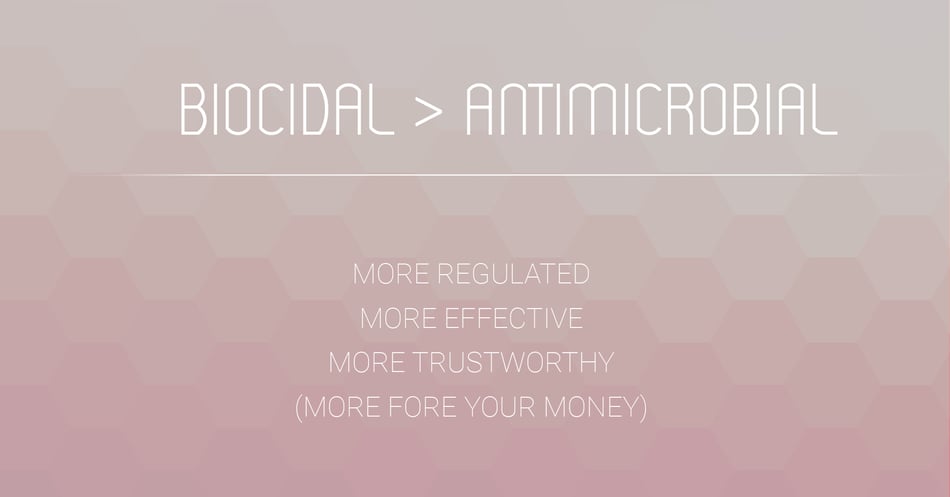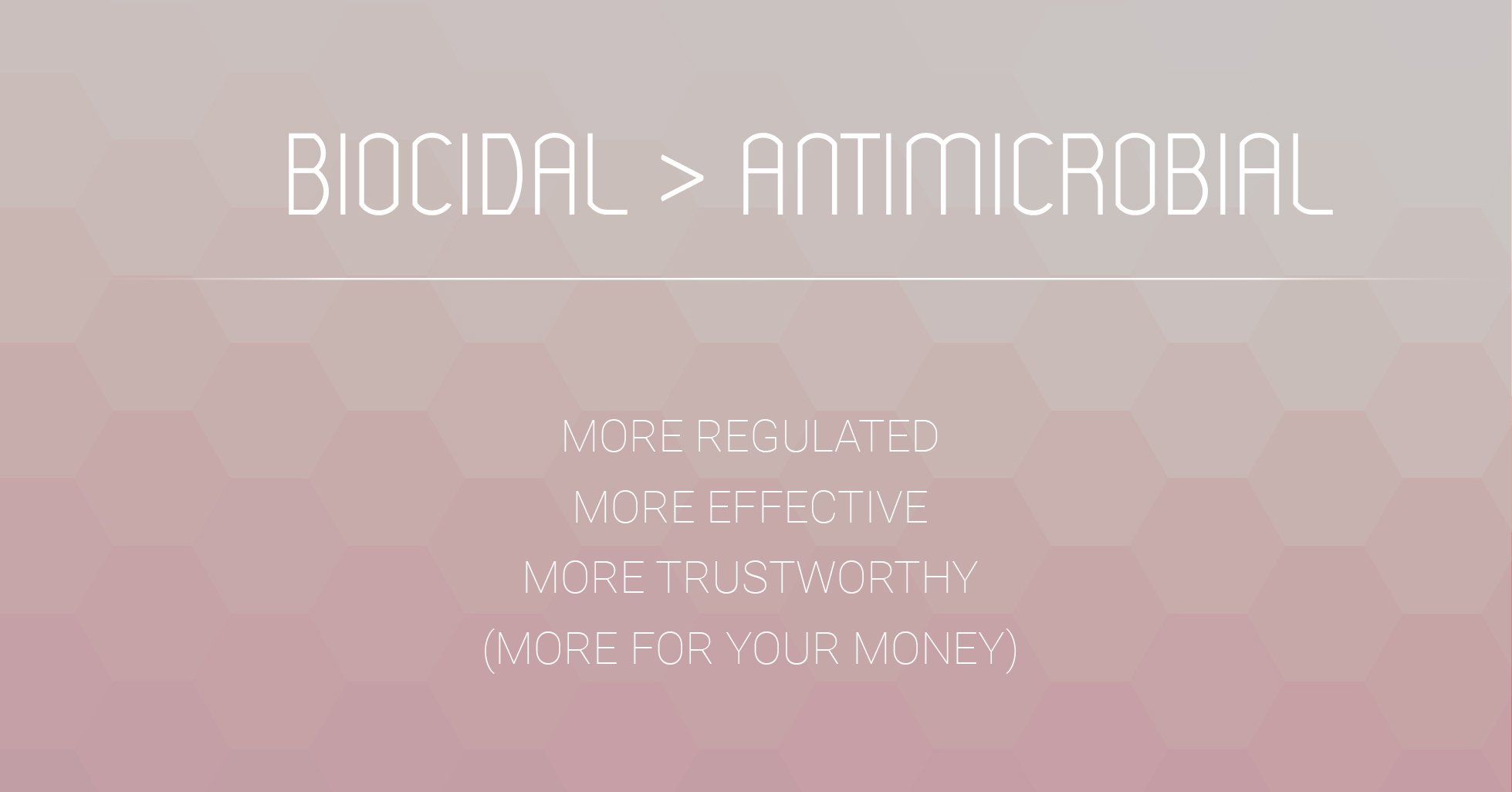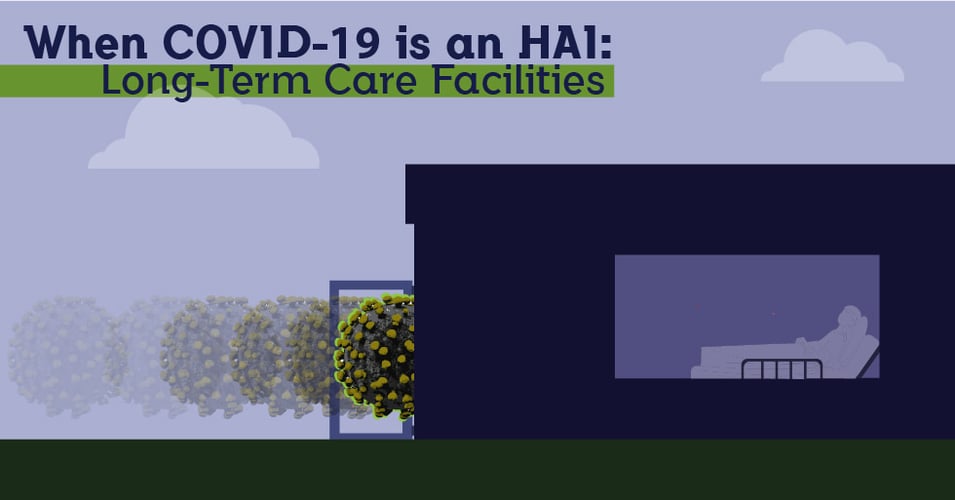Biocidal > Antimicrobial

 We have often discussed the different terms used to describe products that clean the patient environment in this blog. Using the correct terms, and understanding their full definitions, is a critical first step in both writing and learning about the field of infection control and prevention. One term that comes up often as we talk to folks not directly involved in the field is the broad term "antimicrobial." In today's post, we will look at how this broad term covers a huge variety of products and efficacy against pathogens, and we will provide some examples to put this word in context.
We have often discussed the different terms used to describe products that clean the patient environment in this blog. Using the correct terms, and understanding their full definitions, is a critical first step in both writing and learning about the field of infection control and prevention. One term that comes up often as we talk to folks not directly involved in the field is the broad term "antimicrobial." In today's post, we will look at how this broad term covers a huge variety of products and efficacy against pathogens, and we will provide some examples to put this word in context.
Words used by those in the field of infection prevention are very specific: Sterilizer, disinfectant, sanitizer, cleaner. These words carry definitions that refer to the product's ability to kill bacteria, viruses, and other pathogens - but also how long it takes to kill them, and what percentage of them are killed for each duration. If the term "continuous" is used, then it means the product continues at the same degree of efficacy for the duration stated. For example, preventive biocidal surfaces (copper and EOSCU) continuously and actively kill 99.9% of bacteria, even after recontamination.
|
|
In contrast, the term "antimicrobial" is very broad, referring to any product that has some degree of efficacy against pathogens; not all even kill bacteria. This is what makes the term so treacherous- it includes both minimally effective products as well as EPA-registered products. "Antimicrobials" can include products that slow the growth bacteria, prevent their growth, only work against non-disease-causing strains all the way up to products that kill 99%, 99.9% and 100% of all bacteria (sterilizer, disinfectant, etc.). As a result, a product described as "antimicrobial" really does not give the consumer enough information about what a product is capable of doing.
Since we have covered elsewhere the specific definitions mentioned above, let's consider a few examples of products that are marketed as both "continuous" and "antimicrobial" to the healthcare industry today:
Furniture, Rugs, and Floors: Many companies offer "antimicrobial" versions of their products. These are treated with an ingredient that protect the product from odor-causing bacteria or mildew. These products do not reduce hospital-associated infections and do not protect the patient. These products are often marketed as "slowing the growth of bacteria."
Residual Cleaners: There is a spectrum of products with residual "antimicrobial" activity. Some continue killing bacteria for a few minutes after application, while others slow the growth of bacteria for a few hours. It is important to read the fine print with these products to make sure they are registered to make public health claims with the Environmental Protection Agency (EPA). If they do not, then they do not protect the patient. Keep in mind that some of these products are also disinfectants, but do not maintain disinfectant efficacy after the first few minutes of use. That is, their residual effect is far, far weaker.
Sprays, Stickers and Coatings: There are two issues to consider with these products. The first is EPA-registration, as mentioned above. The second is durability. Consumers should find out the exact way durability testing (if any) was conducted. How many touches before it's worn away? How does it withstand heavy use? Does the efficacy wane over time? This is particularly important with high-touch areas.
Paint: There are two paints currently available with EPA-registrations for public health claims. Unless directly stated on the product labels, all other paints do not protect the patient, they just protect the paint from becoming mildewed or absorbing odors (sometimes called "antifouling" paint). As with the category above, durability is an important aspect of this kind of product, especially when considering where the paint will be used.
Copper and EOSCU: Copper and copper-infused polymer (EOSCU) are EPA-registered for public health claims, which also included rigorous durability testing. These products are self-sanitizers, which means they actively and continuously kill 99.9% of bacteria, even after recontamination. Sanitizers are defined as removing enough disease-causing pathogens from the surface so as to prevent transmission to a vulnerable host.
Why does any of this matter? Isn't any antimicrobial action helpful? The answer has to do with efficiency - both in terms of health and finances. Facilities want to invest in products that will have the greatest effect on bacteria, protecting their patients from preventable infections (and their related costs). They want the confidence that their investment is working, continuously and at the expected degree of efficacy, for the life of the product. Investing in anything less than a biocidal product means money thrown at products without EPA registration, without consistent results in the lab or field, with unknown durability and consistency, and often, with ongoing costs due to their short lifespans. Only preventive biocidal products check all the boxes.
![EOScu Logo - Dark - Outlined [07182023]-01](https://blog.eoscu.com/hubfs/Eoscu_June2024/Images/EOScu%20Logo%20-%20Dark%20-%20Outlined%20%5B07182023%5D-01.svg)




